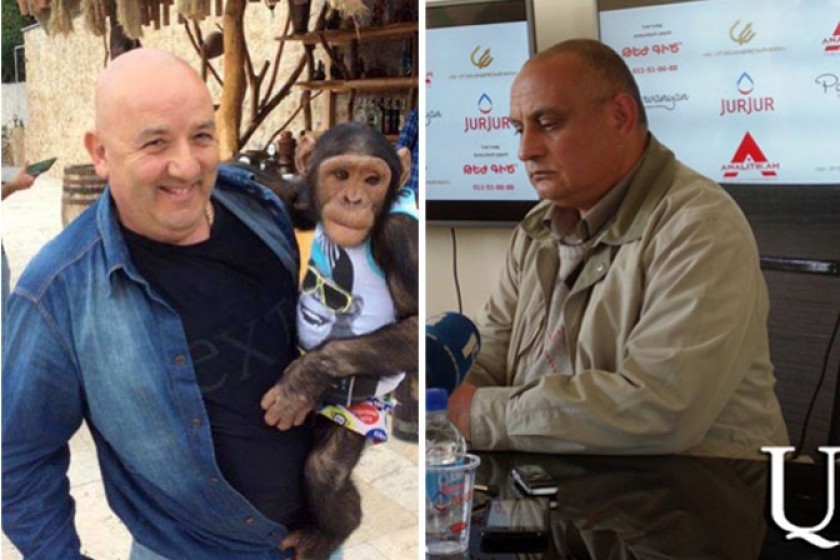
Animal Smuggling Case Dropped; Large Numbers Still Traded via Armenia
The case of smuggling monkeys from Guinea, which has been studied for the past two years by Armenia’s State Revenue Committee (SRC), has been dropped.
Hetq has received the decision by V. Hakobjanyan, an investigator with the SRC’s Special Serious Case Division.
The reason the case was shelved, according to the decision, is a bill passed by Armenia’s parliament on June 15 of this year. The bill, “Changes and Additions to Armenia’s Criminal Code”, has made Article 215 of the Criminal Code regarding contraband no longer applicable. Thus, Hakobjanyan decided to drop the animal smuggling case.
According to the investigation and court procedures, it was revealed that Zoo Fauna Art company owner Artur Khachatryan had purchased various animals, including two Pan Paniscus primate for $65 each on March 13, 2011 from the Domestic Animal Village company in the UAE.
Khachatryan imported the primates into Armenia on May 13 and paid the customs fees,
During the preliminary investigation, information was received from the Interpol branch in the Congo, via Armenia’s Interpol branch office, that two bonobos, listed in the CITES and not subject to sale, were in Armenia, and that, in all probability, the CITES paperwork had been forged.
At the same time, it was revealed that Khachatryan rented one of the bonobos to Serengeti Ltd. owner Artyom Vardanyan. However, sometime in mid-December 2013, the bonobo fell ill and died. The other bonobo died two months after being imported to Armenia, when it was being cared for at the Zo Fauna Ard site.
A forensic examination was ordered to reveal the nature and process for the CITES permits for the importation of the bonobos. The examination was also to look at the seals of the permits.
According to the conclusion of the examiner, a CITES document letterhead was made using offset typography, and the serial number was obtained by using state of the art printing. A typewriter was used to fill in the text. The signature was affixed by using purplish paint in a fountain pen. At the bottom, a round seal was first affixed and then the signature was added. The signature was good for more than three years.
We should note that the forensic examination didn’t identify if an appropriate official signed the document, and thus if the signature belonged to an authorized official. It merely noted how the signature was performed – by “duplication”, “by copying”.
Examiner Hakobjanyan also noted that via Interpol’s office in Armenia, queries were made to the Interpol office in the DRC regarding Artur Khachatryan to obtain incriminating evidence and documentation as to whether Khachatryan violated the DRC’s law of nature preservation (Law 14/003, Article 79). However, despite numerous inquiries and reminders, no information or documents were received from the DRC’s Interpol office, which had launched a search for Artur Khachatryan.
At the same time, according to the document received from Armenia’s Interpol office: “According to data received from non-credible sources, the value of a bonobo in the market is $20,200-24,200. In the country of origin, the DRC, those trafficking in the sale of bonobos demand a price of US$500-1,000 for one primate.”
The pre-investigative body did not clarify how Artur Khachatryan could, in these circumstances, obtain such an expensive primate for $65.
According to data provided by the SRC, in addition to these two bonobos, another five were imported to Armenia in 2011-2012, and that they never left the country. The investigation never looked at what happened to the imported bonobos and their current location.
Prior to all this, Jambo Park owner Artyom Vardanyan, who was arrested on March 23 at the Kilimanjaro International Airport who attempted to transport 61 monkeys out of the country, remains in jail. It was revealed that the animals were destined for Artur Khachatryan.
It appears that Artur Khachatryan fears going after his cargo. He is avoiding possible arrest due to a manhunt launched against him as part of a criminal case in the Congo.
In the summer of 2015, Artur Khachatryan exported parrots, turtles, leopards and 90 monkeys to Russia. The importer is one Edward Khachatourian, a resident of Russia, and Artur Khachatryan’s partner. Edward is in the business of selling exotic animals.
Edward Khachatourian sold the animals to Russia’s Chumakov Institute of Poliomyelitis and Virus Encephalitis as part of an open state competition to purchase laboratory animals to test the efficacy of immuno-biological substances.
The question arises why Edward Khachatourian is importing monkeys to Russia via Armenia when he can do so directly from Africa.
Armenia’s SRC failed to clarify these and other questions. Rather, it hastened to drop the criminal case and didn’t even wait for the documents from the Congo.
Photo (from left): Artyom Vardanyan and Artur Khachatryan. (Artyom Vardanyan’s phot is from his Facebook page and Artur Khachatryan’s photo is from Aravot)
 Videos
Videos Photos
Photos




Comments (1)
Write a comment